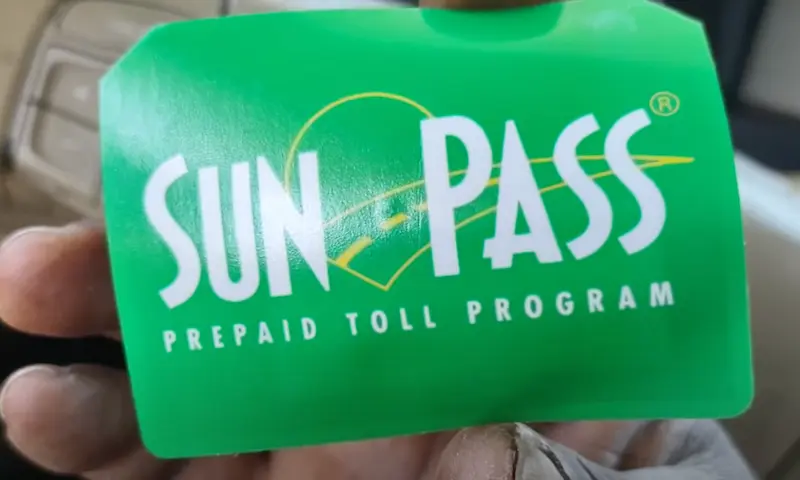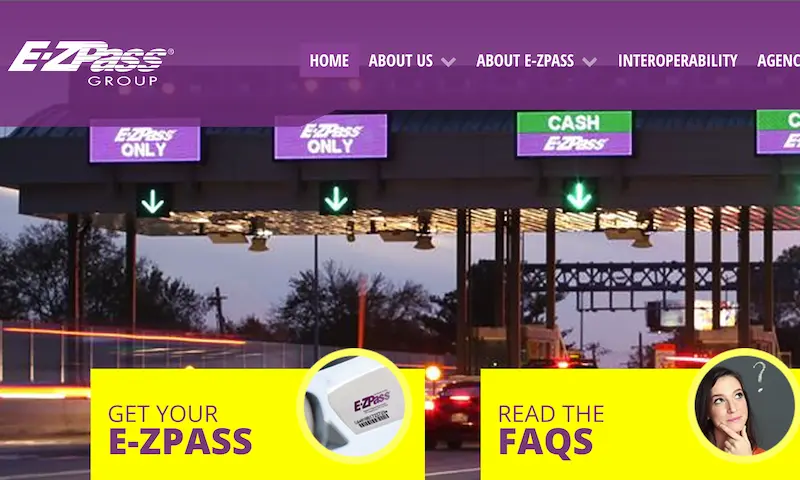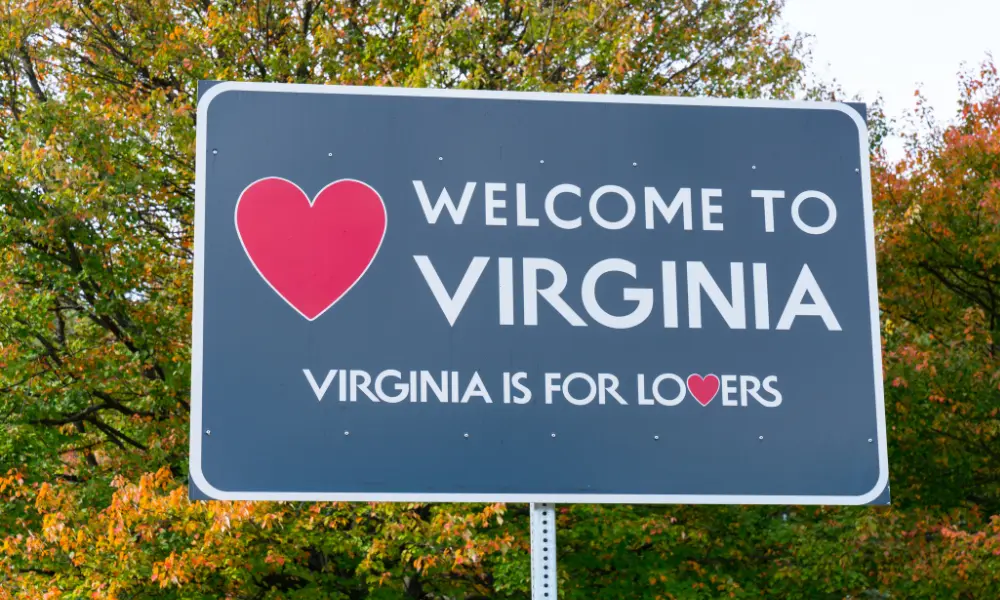Thinking about getting an E-ZPass or wondering where you can use your existing transponder? You’re about to save yourself countless stops at toll booths across much of the United States. E-ZPass has grown into the largest interoperable toll collection network in America, but its coverage isn’t universal—and understanding exactly where it works can save you both time and unexpected toll violations.
What States Accept E-ZPass?
E-ZPass currently works in 20 states, creating a massive network that spans from Maine to Florida and westward to Minnesota and Illinois. The system lets you drive through toll facilities across multiple states without stopping to pay cash or switching toll tags.
The complete list of E-ZPass states includes:
Northeast:
- Maine
- New Hampshire
- Massachusetts
- Rhode Island
- New York
- New Jersey
- Pennsylvania
- Delaware
Mid-Atlantic:
- Maryland
- Virginia
- West Virginia
Midwest:
- Ohio
- Indiana
- Illinois
- Minnesota
Southeast:
- North Carolina
- Florida
- Georgia
Additional Locations:
- Michigan (limited to Bay City crossings)
- Kentucky (select facilities)
This creates a nearly continuous corridor of E-ZPass acceptance along the entire eastern seaboard and through major midwestern transportation routes. If you frequently drive between these states, a single E-ZPass transponder eliminates the need for multiple regional toll devices.
Major Highways and Tolls That Accept E-ZPass
E-ZPass works on almost all toll highways, bridges, and tunnels within participating states. Here’s where you can expect to use your transponder on major corridors:
Interstate Highways:
- I-95 (Maine to Florida)
- I-90 (Massachusetts to Illinois)
- I-80 (New Jersey to Illinois)
- I-76 (Pennsylvania Turnpike)
- I-70 (Maryland to Ohio)
Major Bridges and Tunnels:
- George Washington Bridge (NY/NJ)
- Lincoln Tunnel (NY/NJ)
- Holland Tunnel (NY/NJ)
- Baltimore Harbor Tunnel (MD)
- Fort McHenry Tunnel (MD)
- Chesapeake Bay Bridge-Tunnel (VA)
Parkways and Turnpikes:
- New York State Thruway
- New Jersey Turnpike
- Pennsylvania Turnpike
- Maine Turnpike
- Ohio Turnpike
- Indiana Toll Road
- Garden State Parkway (NJ)
E-ZPass lanes are typically marked with purple signage and dedicated lanes that allow you to maintain highway speeds in many locations. The system covers approximately 1,800 miles of interstate corridors, making it the most extensive electronic tolling network in North America.
Recent Additions to the E-ZPass Network
The E-ZPass network continues to expand, with several states joining in the past few years:
Minnesota: Fully integrated in August 2021, rebranding its MnPASS system as E-ZPass Minnesota. The system maintains special functionality for high-occupancy vehicle (HOV) lanes.
Georgia: Achieved full E-ZPass compatibility by mid-2022 through its Peach Pass system. This addition created a continuous E-ZPass corridor from Maine to Florida.
Michigan: Entered the network through the United Bridge Partners’ Bay City crossing, marking the system’s first Great Lakes expansion.
These expansions reflect the ongoing effort to create nationwide toll interoperability, though full national coverage remains a work in progress due to technical and political challenges.
Where E-ZPass Doesn’t Work
Despite its widespread adoption, E-ZPass has significant gaps in coverage that drivers should be aware of:
Regions Without E-ZPass:
- West Coast (California, Oregon, Washington)
- Southwest (Arizona, New Mexico, Texas)
- Mountain West (Colorado, Utah, Nevada)
- Deep South (Alabama, Louisiana, Mississippi)
- Central Plains (Kansas, Oklahoma, Nebraska)
Notable Facilities Without E-ZPass in Member States:
- Select ferry services like Cape May-Lewes (DE/NJ)
- International border crossings, including Detroit-Windsor Tunnel
- Some private toll roads like Downbeach Express in New Jersey
- Certain HOV/express lanes with separate tolling systems
If you’re planning travel beyond the E-ZPass network, you’ll need to prepare for alternative toll payment methods, including:
- Regional transponders (FasTrak in California, TxTag in Texas, etc.)
- Pay-by-plate options (automatic billing based on license plate photos)
- Cash payments where still accepted
E-ZPass Compatibility With Other Toll Systems
While E-ZPass doesn’t work everywhere, it does offer limited interoperability with some regional toll systems:
| Regional System | States | E-ZPass Compatibility |
|---|---|---|
| Peach Pass | Georgia | Fully compatible |
| NC Quick Pass | North Carolina | Fully compatible |
| SunPass | Florida | Fully compatible in most locations |
| E-PASS | Florida | Compatible on most facilities |
| MnPASS | Minnesota | Renamed to E-ZPass Minnesota |
| I-PASS | Illinois | Fully compatible |
| FastPass | Kentucky | Limited compatibility |
This interoperability means you can often use your E-ZPass transponder in these regions without purchasing a separate tag, though you should verify coverage for specific routes before traveling.
Getting an E-ZPass: State-By-State Options
One of the most confusing aspects of E-ZPass is that each state administers its own program with different costs, requirements, and benefits. Here’s how they compare:
| State | Transponder Fee | Monthly Fee | Minimum Balance | Special Discounts |
|---|---|---|---|---|
| New York | Free | $1.00 | $30 | Resident discounts on bridges |
| New Jersey | $10.00 | $1.00 | $25 | NJ Turnpike discounts |
| Pennsylvania | $38.00 | None | $35 | PA Turnpike discounts |
| Maryland | Free | $1.50 | $25 | Bay Bridge discounts |
| Virginia | Free | $0.50 | $35 | None |
| Massachusetts | Free | $1.25 | $20 | Resident tunnel discounts |
| Illinois | Free | None | $30 | I-PASS integration |
| Maine | $17.00 | None | $15 | Volume discounts |
You can purchase an E-ZPass from any member state regardless of where you live, and it will work throughout the entire network. Many savvy drivers choose their E-ZPass provider based on fees and discounts rather than their home state.
E-ZPass for Commercial Vehicles
Commercial vehicles require special consideration when using E-ZPass. Most states offer commercial accounts with transponders rated for heavier vehicles and multiple axles:
Commercial E-ZPass Features:
- Vehicle classification options for accurate toll calculation
- Higher prepaid account minimums (typically $100+)
- Special transponders for trucks with metallic windshields
- Business account management tools
- Optional consolidated billing
New York requires orange commercial transponders for trucks over 7 axles, while Pennsylvania enforces strict class matching to prevent toll evasion. Incorrect classification can result in significant violations and penalties.
Commercial operators should contact their state’s E-ZPass customer service for specific program details, as requirements vary considerably across the network.
Using E-ZPass for HOV and Express Lanes
Several E-ZPass states have implemented high-occupancy vehicle (HOV) lanes or express lanes that use specialized E-ZPass transponders:
E-ZPass Flex: Available in Virginia, this switchable transponder allows drivers to indicate when they have multiple passengers to qualify for HOV discounts or free passage.
E-ZPass Minnesota: Formerly MnPASS, this system uses E-ZPass technology for express lane access with variable pricing based on congestion.
I-95 Express Lanes: Located in Maryland, Virginia, and Florida, these lanes use E-ZPass for dynamic toll collection based on traffic conditions.
These specialized lanes typically feature variable pricing that changes based on congestion levels, with rates displayed on electronic signs before entry points. Some offer free access to carpools, but you’ll need the correct transponder type to qualify.
Handling E-ZPass Violations
Even with an active E-ZPass account, violations can occur for various reasons:
Common Causes of Violations:
- Insufficient account balance
- Improperly mounted transponder
- Expired credit card for auto-replenishment
- Unregistered license plate
- Driving in a lane not equipped for your transponder type
When a violation occurs, most agencies follow a similar process:
- First Notice: $25-50 administrative fee plus toll due (30-day window to resolve)
- Second Notice: Increased penalties, typically $50-100 plus tolls (60 days)
- Final Action: Registration hold preventing vehicle registration renewal (90+ days)
If you receive a violation notice despite having an active E-ZPass, contact the issuing agency immediately. Many will waive first-time fees if you have a good payment history and promptly resolve the issue.
E-ZPass vs. Pay-By-Plate: Pros and Cons
Many toll facilities now offer license plate-based tolling as an alternative to E-ZPass, but there are important differences:
E-ZPass Advantages:
- Lower toll rates (typically 30-50% cheaper than pay-by-plate)
- No processing fees or monthly invoices
- Immediate toll payment rather than delayed billing
- Access to dedicated express lanes
- Greater privacy (fewer photos of your vehicle)
- Available discounts for frequent users
Pay-By-Plate Advantages:
- No transponder to purchase or mount
- No account maintenance or minimum balances
- Convenient for infrequent toll road users
- No need to switch transponders between vehicles
For regular toll road users, E-ZPass almost always offers better value through discounted toll rates and avoided administrative fees. Occasional toll road users might prefer pay-by-plate for simplicity despite higher costs.
E-ZPass for Visitors and Rental Cars
If you’re visiting the E-ZPass region or renting a car, here are your options:
For Visitors:
- Temporary E-ZPass: New York, New Jersey, and some other states offer temporary tags with simplified registration
- Rental car options: Most major rental agencies offer E-ZPass rental (typically $3-5 per day plus tolls)
- Pay-by-plate: Available at most facilities but costs significantly more
- Cash lanes: Still available at some facilities but becoming increasingly rare
Rental Car Considerations:
- Check if your rental company offers an E-ZPass option when booking
- Be aware that rental agencies typically charge service fees (often $3-4 per day) plus the actual tolls
- If using your personal E-ZPass in a rental, remember to add the rental’s license plate to your account temporarily
- Save toll receipts in case of billing disputes with the rental company
Visitors planning extensive travel in E-ZPass regions may find it more economical to purchase a transponder rather than paying rental fees or higher pay-by-plate rates.
The Bottom Line: Is E-ZPass Right for You?
E-ZPass makes the most sense if you:
- Drive regularly through toll facilities in the eastern or midwestern states
- Value convenience over stopping to pay cash
- Want to save money through discounted toll rates
- Prefer express lanes that reduce travel time
- Don’t mind maintaining a prepaid account
The system isn’t perfect—coverage gaps, state-specific policies, and account maintenance requirements can cause frustration. However, for most drivers in the covered regions, the time and money saved make E-ZPass well worth the minimal investment.
As the network continues to expand and technology improves, E-ZPass is likely to become even more valuable for interstate travelers and commuters alike. By understanding where it works, how to use it properly, and what alternatives exist for non-covered areas, you can make the most of this widespread tolling system.
















